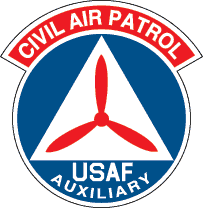|
|
 |
| SW Aviator Magazine is available in print free at FBOs and aviation-related businesses throughout the Southwest or by subscription. |

|
 |

|
 |
 |
 |
|
The web's most comprehensive database of Southwest area aviation events.
|

|
 |

|
 |
|
Featured Site:
|
|
|
 |
|
A continuosly changing collection of links to our favorite aviation related web sites.
|

|
 |

|
 |
 |
|

|
The Civil Air Patrol
|
|
You Can Make a Difference
|
 By 1LT Allan Pearlstein By 1LT Allan Pearlstein
One week before the Japanese attached Pearl Harbor, the Civil Air Patrol was formed by over 150,000 volunteers who were concerned about protecting America’s coastline. Originally flying under the jurisdiction of the Army Air Forces, CAP pilots flew over one-half million hours and were credited with sinking two enemy submarines and rescuing hundreds of crash survivors during World War II. On May 26, 1948, Congress passed Public Law 557 making CAP the United States Air Force Auxiliary, with three primary missions: Cadet Programs, Aerospace Education, and Operations (Homeland Security, Search and Rescue, Emergency Services, Counter Drug flights, and Disaster Relief).
CAP is classified as a non for profit 501(c)(3) volunteer corporation. CAP is composed of 52 wings (one Wing per state, plus one wing in Puerto Rico and one in Washington, DC). CAP is best known for work done in the Operations component, as the primary mission of the volunteers is to save lives. Each year, CAP flies roughly 85 percent of all inland search and rescue missions directed by the Air Force Rescue Coordination Center at Langley AFB in Virginia. The CAP was also instrumental in taking aerial photographs right after the collapse of the World Trade Center towers on 09/11/01. CAP does aerial photography of waterways, bridges, power grids, railroad lines, and highways to insure public safety. Since CAP is comprised of volunteers, more than 100 million dollars of taxpayer money is saved each year. For example, when performing a mission, it costs the taxpayer roughly $75 per hour to operate a CAP aircraft. On the other hand, it costs roughly $350 per hour to operate a federal aircraft, and as high as $1,600 per hour to operate a helicopter.
The purpose of aerospace education is to give members a thorough understanding of the importance of aviation and space exploration in our society and national security. CAP does this by having aerospace education classes, model rocketry classes and launches, field trips, and through study of a thorough aerospace curriculum.
Our most rewarding component, however, is the Cadet Program. In order to qualify for membership in the cadet program, the member must be between the ages of 12-17. If a member joins prior to his or her 18th birthday, they will remain a cadet until age 21. If a member joins after turning 18, they will go into the senior program. The major focus of the cadet program is preparing the youngsters for future careers in the military and/or aerospace education careers. In fact, six to ten percent of former cadets have received appointments to the Military Academies. Cadets are able to participate in the following activities, which are each designed to promote leadership, discipline, aerospace studies, and team building: national flight academies, summer encampments, orientation flights, drill teams, field trips, search and rescue school, survival training, physical fitness, International Air Cadet Exchange, color guard, college scholarships, and academy preparation.
If you are either a student who has aspirations of pursuing a career in aerospace/aviation, joining the military, or learning leadership, or if you are 18 or over and wish to shape the young people of this country or participate in CAP Operations, then consider joining CAP. Cadets and senior members alike spend several hundred hours per year training to assist in emergencies. From downed aircraft to natural disasters, CAP members are on alert to respond to emergencies in their home state and elsewhere in our country. For more information about membership, visit the national web site at cap.gov, or call the national membership number at 800-FLY-2338. Arizona residents can visit the Arizona Wing web site at azwg.cap.gov or contact the Arizona Wing CAP Headquarters at 602-392-7503 to be directed to a local squadron.
|
Click here to return to the beginning of this article.  |
|